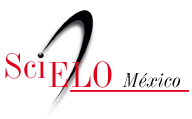Sustainable fiber reinforced cementitious panels containing PCM: Mechanical and thermal performance
DOI:
https://doi.org/10.21041/ra.v10i2.479Keywords:
energy efficiency, phase change materials, fiber reinforced cementitious compositesAbstract
An experimental study was planned and executed for the application of Phase Change Materials (PCM) containing fiber-reinforced cementitious panels on buildings. The objective of the research was to enhance the thermal performance of the panels. Panels with the dimensions of 60x120x2.5 cm were produced and experimental investigations about the thermal and the mechanical performance of the composites were carried out. PCM containing composites showed higher latent heat capacity and lower thermal conductivity. Reinforcement with chopped fibers compensated the strength loss due to PCM in cementitious panels. Specific fracture energy of the panels increased with increase of PCM ratio. PCM containing fiber reinforced cementitious panels showed great potential for energy efficient buildings with enhanced thermal and mechanical properties.
Downloads
References
Akeiber, H., Nejat, P., Majid, M.Z.A, Wahid, M.A., Jomehzadeh, F., Famileh, I.Z., Calautit, J.K., Hughes, B.R., Zaki, S.A. (2016). A review on phase change material (PCM) for sustainable passive cooling in building envelopes. Renewable and Sustainable Energy Reviews. 60:1470–1497. https://doi.org/10.1016/j.rser.2016.03.036.
Arce, P., Castellón, C., Castell, A., Cabeza, L. F. (2012). Use of microencapsulated PCM in buildings and the effect of adding awnings. Energy and Buildings. 44: 88–93. https://doi.org/10.1016/j.enbuild.2011.10.028.
Barreneche, C., Navarro, M. E., Fernández, A. I., Cabeza, L. F. (2013). Improvement of the thermal inertia of building materials incorporating PCM. Evaluation in the macroscale. Applied Energy. 109: 428–432. https://doi.org/10.1016/j.apenergy.2012.12.055.
Borreguero, A. M., Serrano, A., Garrido, I., Rodríguez, J. F., Carmona, M. (2014). Polymeric-SiO2-PCMs for improving the thermal properties of gypsum applied in energy efficient buildings. Energy Conversion and Management. 87: 138–144. https://doi.org/10.1016/j.enconman.2014.07.027.
Chen, B., Yang, Q., Li, J. S., Chen, G. Q. (2017). Decoupling analysis on energy consumption, embodied GHG emissions and economic growth — The case study of Macao. Renewable and Sustainable Energy Reviews. 67: 662–672. https://doi.org/10.1016/j.rser.2016.09.027.
Chwieduk, D. (2003). Towards sustainable-energy buildings. Applied Energy 76 (1–3): 211–217. https://doi.org/10.1016/S0306-2619(03)00059-X.
Esseghir, A.; Khouni, L.H. (2014). Economic growth, energy consumption and sustainable development: The case of the Union for the Mediterranean countries. Energy. 71: 218-225. https://doi.org/10.1016/j.energy.2014.04.050.
Geetha, N. B.; Velraj, R. (2012). Passive cooling methods for energy efficient buildings with and without thermal energy storage – A review. Energy Education Science and Technology Part A: Energy Science and Research. 29(2): 913-946.
International Energy Agency, IEA, (2016). IEA Headline Energy Data, https://www.iea.org, last accessed: 12.02.2017.
Li, C., Yu, H., Song, Y., Liu, Z. (2019). Novel hybrid microencapsulated phase change materials incorporated wallboard for year-long year energy storage in buildings. Energy Conversion and Management. 183: 791–802. https://doi.org/10.1016/j.enconman.2019.01.036.
Mehling, H.; Cabeza, L.F. (2008), Heat and Cold Storage with PCM: An up to Date Introduction in to Basics and Applications, Springer, Berlin, Heidelberg. 308 pp. ISBN: 978-3-540-68556-2, e-ISBN: 978-3-540-68557-9. https://doi.org/10.1007/978-3-540-68557-9.
Papadopoulos, A. M.; Theodosiou, T. G.; Karatzas, K.D. (2002). Feasibility of energy savingrenovation measures in urban buildings: the impact of energy prices and theacceptable pay back time criterion. Energy and Buildings 34(5):455–466. https://doi.org/10.1016/S0378-7788(01)00129-3.
Pekmezci, B.Y., Utility of Colloidal Nano-silica in Processing of Fiber Reinforced Cementitious Composites. Sobolev, K. and Shah S. P. Editors. Nanotechnology in Construction Proceedings of NICOM5, Springer. pp. 501-506. ISBN: 978-3-319-17087-9 eISBN: 978-3-319-17088-6. https://doi.org/10.1007/978-3-319-17088-6
Raoux, S., Wuttig, M. (Eds.) (2009). Phase Change Materials: Science and Applications, Springer, 446 pp. ISBN: 978-0-387-84873-0, e-ISBN: 978-0-387-84874-7. https://doi.org/10.1007/978-0-387-84874-7.
RILEM TCS, (1985). Determination of the fracture energy of mortar and concrete by means of three-point bend tests on notched beams. Materials and Structures, 18(106): 285-290. https://doi.org/10.1007/BF02472918.
Sharifi, N. P., Shaikh, A. A. N., Sakulich, A. R. (2017), Application of phase change materials in gypsum boards to meet building energy conservation goals. Energy and Buildings. 138:455–467. https://doi.org/10.1016/j.enbuild.2016.12.046.
Sharma, A., Tyagi, V. V., Chen, C. R., Buddhi, D. (2009). Review on thermal energy storage with phase change materials and applications. Renewable and Sustainable Energy Reviews, 13(2): 318–345. https://doi.org/10.1016/j.rser.2007.10.005.
Singh Rathore, P.K., Shukla, S.K., Gupta, N.K. (2020). Potential of microencapsulated PCM for energy savings in buildings: A critical review. Sustainable Cities and Society. 53. https://doi.org/10.1016/j.scs.2019.101884.
Souayfane, F., Fardoun, F., Biwole, P.H. (2016). Phase change materials (PCM) for cooling applications in buildings: A review. Energy and Buildings. 129:396–431. https://doi.org/10.1016/j.enbuild.2016.04.006.
Su, J. F., Wang, X. Y., Wang, S. B., Zhao, Y. H., Huang, Z. (2012). Fabrication and properties of microencapsulated-paraffin/gypsum-matrix building materials for thermal energy storage. Energy Conversion and Management. 55: 101–107. https://doi.org/10.1016/j.enconman.2011.10.015.
Thiele, A. M., Jamet, A., Sant, G., Pilon, L. (2015). Annual energy analysis of concrete containing phase change materials for building envelopes. Energy Conversion and Management. 103: 374–386. https://doi.org/10.1016/j.enconman.2015.06.068.
Tuncel, E. Y., Pekmezci, B. Y. (2018). A sustainable cold bonded lightweight PCM aggregate production: Its effects on concrete properties. Construction and Building Materials. 181: 199-216. https://doi.org/10.1016/j.conbuildmat.2018.05.269.
United Nations, (2015), Resolution adopted by the General Assembly on 25 September 2015, General Assembly A/Res/70/1, Transforming our world: the 2030 Agenda for Sustainable Development. Seventieth session, 21 October 2015, pp. 35. https://www.un.org/ga/search/view_doc.asp?symbol=A/RES/70/1&Lang=E
Downloads
Published
How to Cite
Issue
Section
License
_______________________________
License in effect from September 2020
You are free to:
- Share — copy and redistribute the material in any medium or format for any purpose, even commercially.
- Adapt — remix, transform, and build upon the material for any purpose, even commercially.
- The licensor cannot revoke these freedoms as long as you follow the license terms.
Under the following terms:
- Attribution — You must give appropriate credit , provide a link to the license, and indicate if changes were made . You may do so in any reasonable manner, but not in any way that suggests the licensor endorses you or your use.
- No additional restrictions — You may not apply legal terms or technological measures that legally restrict others from doing anything the license permits.
Notices:
You do not have to comply with the license for elements of the material in the public domain or where your use is permitted by an applicable exception or limitation .
No warranties are given. The license may not give you all of the permissions necessary for your intended use. For example, other rights such as publicity, privacy, or moral rights may limit how you use the material.





















.png)














